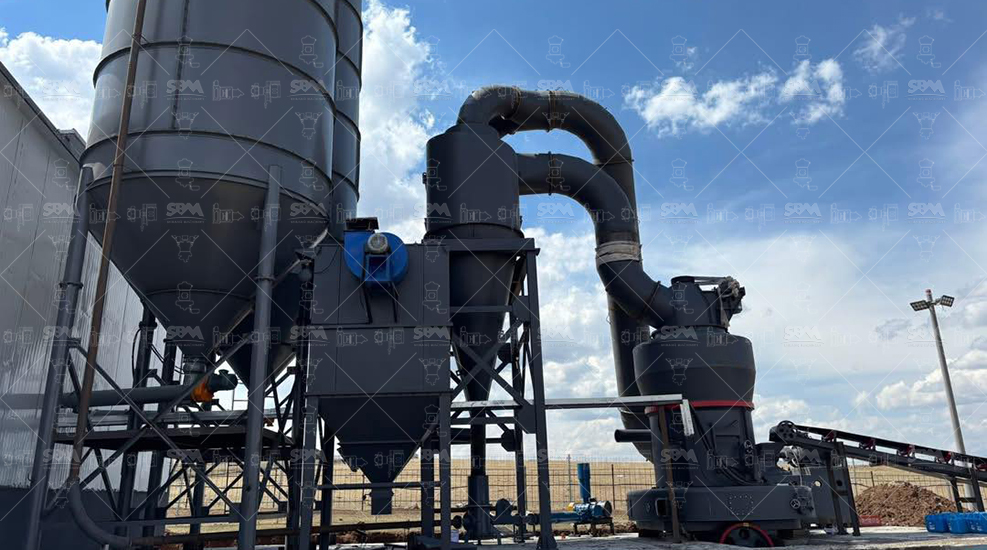India, with its vast mineral resources and booming industrial sectors, has seen a significant surge in demand for high-quality limestone powder. As a key raw material in industries such as cement, steel, agriculture, and construction, limestone’s processing efficiency directly impacts productivity and sustainability. The MTW Series European Trapezium Grinding Mill (MTW Raymond Mill) emerges as a revolutionary solution tailored to meet India’s growing needs for precision grinding, energy efficiency, and environmental compliance. This article explores the technical prowess, industrial applications, and market relevance of this advanced grinding mill in the Indian context.
Technical Superiority of MTW Series Trapezium Grinding Mill
The MTW Series Grinding Mill is engineered with cutting-edge technologies to address the challenges of limestone processing. Its design incorporates decades of research and feedback from over 9,500 global customers, resulting in a machine that outperforms traditional mills in multiple dimensions.
Advanced Structural Design
- Cone Gear Whole Transmission System: Unlike conventional mills that rely on belt drives, the MTW mill employs an integrated cone gear transmission system. This innovation ensures smoother operation, higher torque transmission efficiency, and reduced energy loss.
- Inner Oil Absorption Lubrication: The mill’s lubrication system uses thin oil instead of grease, significantly extending bearing life and reducing maintenance frequency. For instance, the oil replacement cycle is approximately four months, lowering operational costs.
- Arc Air Flue Design: The curved air duct minimizes airflow resistance, enhancing powder collection efficiency while reducing energy consumption by up to 30% compared to traditional designs.
Precision and Flexibility
- Adjustable Fineness (30–325 Mesh): The MTW mill integrates a patented variable-frequency classifier that allows real-time adjustments to output fineness. This feature is critical for industries requiring specific particle sizes, such as cement (80–200 mesh) or steelmaking flux (200–325 mesh).
- High Capacity and Scalability: With models ranging from MTW110 to MTW215G, the mill accommodates throughputs from 3 t/h to 45 t/h. For example, the MTW175G model processes 9.5–25 t/h, making it ideal for mid- to large-scale Indian plants.
Energy Efficiency and Sustainability
- The mill’s low-vibration design and sealed negative-pressure operation minimize dust emissions, aligning with India’s stringent environmental regulations.
- Motor configurations are optimized to reduce power consumption. For instance, the MTW215G model uses a 280 kW main motor and 315 kW fan motor, balancing high output with energy savings.
Industrial Applications in India
India’s limestone reserves, concentrated in states like Rajasthan, Andhra Pradesh, and Madhya Pradesh, serve as the backbone for multiple industries. The MTW Series Grinding Mill unlocks value across these sectors:
Cement Production
- Limestone constitutes 70–80% of raw materials in cement manufacturing. The MTW mill’s ability to produce 80–200 mesh powder ensures optimal clinker formation.
- Its high throughput (e.g., 15–45 t/h for MTW215G) supports India’s goal to reach 550–600 million tonnes of cement capacity by 2030.
Steel Industry
- Steel-grade limestone (CaO ≥53%, SiO₂ ≤1.5%) requires ultra-fine grinding (200–325 mesh) to act as a flux. The MTW mill’s precision ensures compliance with Bureau of Indian Standards (BIS) specifications.
Agriculture and Soil Stabilization
- Finely ground limestone (100–150 mesh) neutralizes acidic soils, enhancing crop yields. The MTW110Z model, with a 3–10 t/h capacity, is ideal for rural agro-processing units.
Construction and Building Materials
- From drywall additives to asphalt fillers, limestone powder’s versatility drives demand. The mill’s ability to produce 30–325 mesh powder supports diverse applications.
Case Study: MTW Mill in an Indian Limestone Plant
- Material: Limestone (Mohs hardness: 3–4, moisture <6%)
- Equipment: Two MTW175G mills
- Output: 25 t/h per mill, fineness 200 mesh
- Results:
- Energy savings of 25% compared to traditional ball mills.
- Dust emissions reduced by 95%, meeting CPCB norms.
- ROI achieved within 18 months due to low maintenance and high uptime.
Market Relevance and Competitive Edge
- Localized Production: Reduces dependency on imported steel-grade limestone by enabling high-quality domestic processing.
- Cost Efficiency: Lower energy consumption (0.5–1.2 kWh/t) and extended component lifespans cut operational costs by 30–40%.
- Adaptability: Suitable for diverse materials like dolomite, gypsum, and coal, making it a versatile investment.
Future Prospects
With India’s infrastructure and manufacturing sectors poised for exponential growth, the demand for advanced grinding solutions will intensify. The MTW Series Grinding Mill, with its blend of innovation, efficiency, and sustainability, is set to become the cornerstone of India’s limestone processing ecosystem. By adopting this technology, Indian manufacturers can achieve global competitiveness while contributing to the nation’s “Make in India” and “Green Industrialization” goals.
In conclusion, the MTW Series European Trapezium Grinding Mill redefines limestone powder production, offering unmatched precision, scalability, and environmental stewardship. For Indian industries seeking to optimize their operations, this mill is not just a machine—it’s a strategic asset driving growth in a resource-driven economy.


